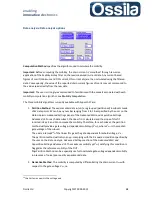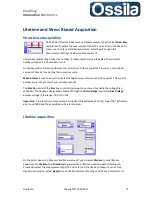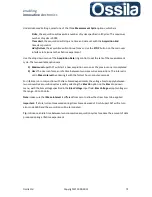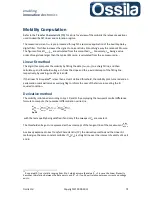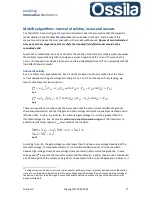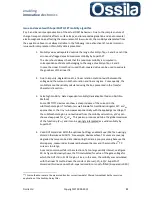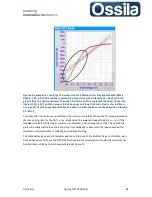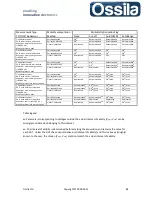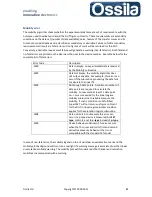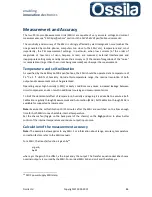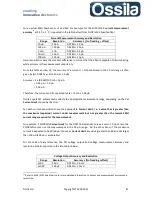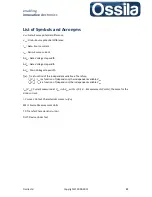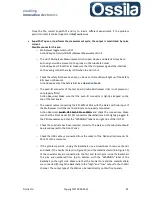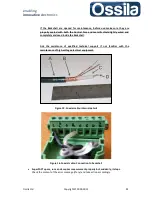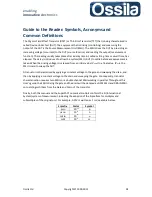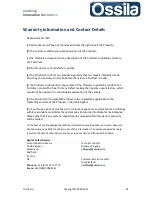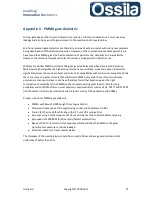
enabling
innovative
electronics
Ossila Ltd
Copyright © 2009-2015
82
Issue and caveats with SuperFACT OFET mobility algorithm
Eqs. 3 and 6 are only approximation of the actual OFET behaviour. Due to the complex nature of
charge transport, dielectric effects, surface traps, environmental degradation and environmental
electromagnetic noise affecting the measurement of low currents, the mobility extrapolated from
the equations above is not always reliable. In the following, non exhaustive list, typical common
issues with interpretation of mobility data is presented.
1.
Mobility values extrapolated outside the range of validity of Eqs. 2 and 3 can still be
erroneously flagged as valid maximum mobility by SuperFACT.
The User should always check that the maximum mobility is computed in
correspondence of data set belonging to the range of validity of Eqs. 2 and 3.
In case the Linear Fit method is used, the R-squared value can be used to evaluate
the goodness of the linear fit.
2.
Due to impurity, degradation etc, a linear relation could not exist between the
voltage and the current in both saturation and liner a regime. Consequently, the
mobility cannot be reliably calculated using the Eqs. presented in the
Transfer
Characteristic
section.
3.
False high mobility - Gate dependent mobility (Derivative Method and Partition
Method)
Some OFET/TFT devices can show a steep increase of the current in the
subthreshold region. This feature is well-known for traditional inorganic FET: as V
GS
approaches V
T
, the tiny I
DS
increases exponentially with the applied gate voltage. If
the subthreshold region is not excluded from the mobility calculation,
μ
(V
GS
) can
show a steep peak for V
GS
<V
Th
. This peak so pronounced to be the global maximum
of the function
μ
(V
GS
), and it can be wrongly interpreted as a valid mobility by
SuperFACT.
4.
Valid DUT discarded. With the optimisation flags enabled, SuperFACT can wrongly
discard otherwise valid DUTs. For example, devices whose TC curves are severely
degraded by noise can be discarded during the data a pre-processing because the
discrepancy, measured as R-squared, between the raw and the smoothed
25
TC
curves is too large.
A second common pitfall, is the selection of a too large validity interval, see figure
30. As figure 30 clearly shows, the fit is calculated for value of the gate voltage for
which the DUT still in its OFF region. Since, in this case, the mobility was calculated
with the linear fit method over the constant interval [-20, -60] V, SuperFACT
discarded this device since the R-squared condition is not fulfilled (R-squared<<0.90)
25
TC smoothed curves are the measured transfer curves (raw data) filtered (smoothed) by the recursive
application of the Savitzky-Golay filter

